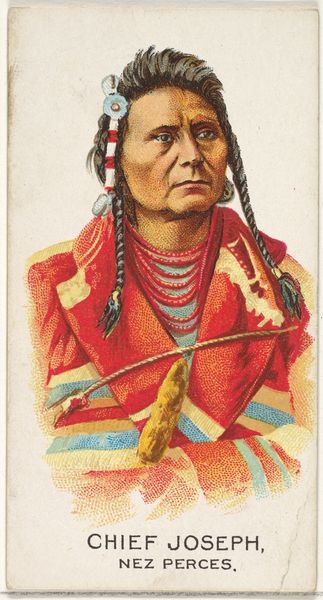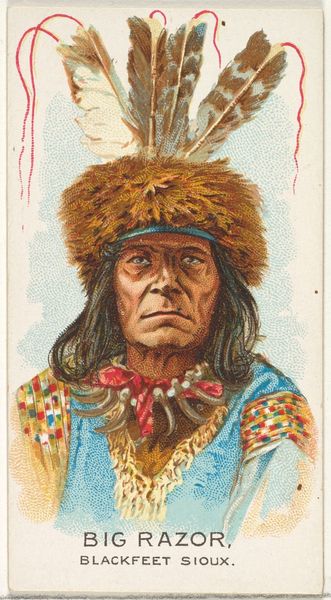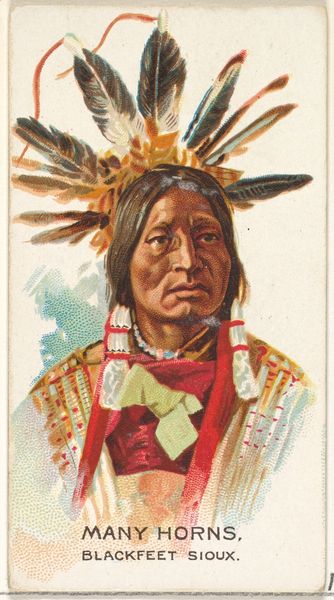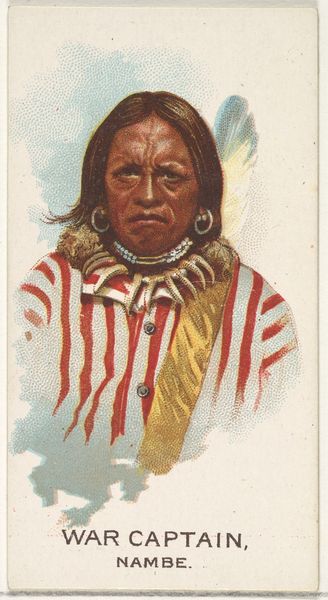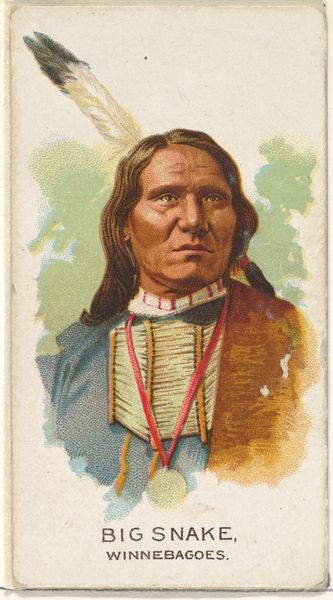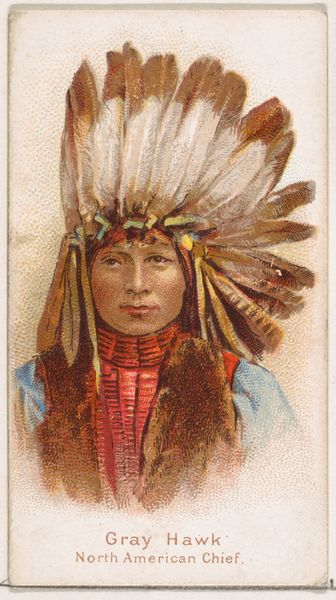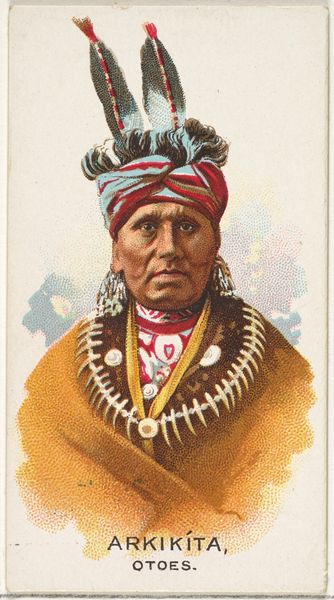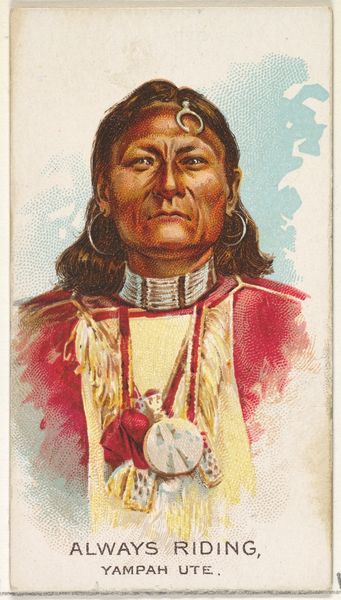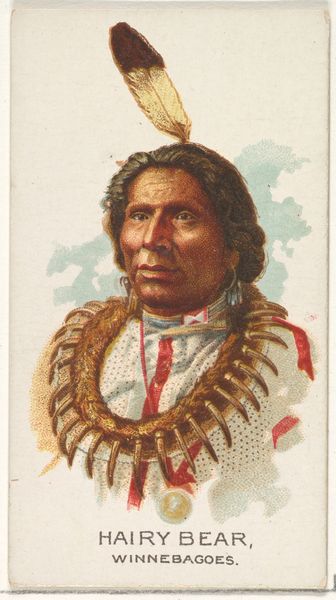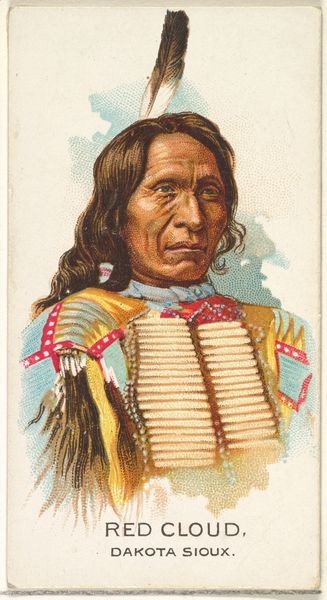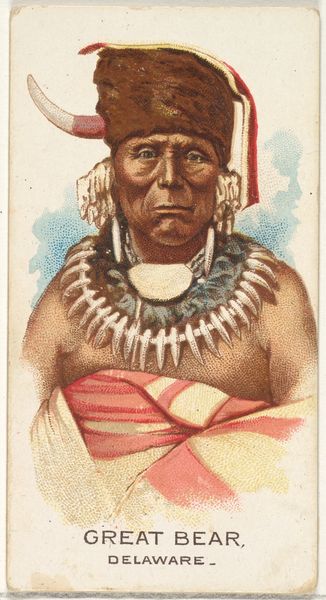
Deer Foot, North American Chief, from the Savage and Semi-Barbarous Chiefs and Rulers series (N189) issued by Wm. S. Kimball & Co. 1888
0:00
0:00
print, paper
#
portrait
# print
#
paper
#
oil painting
#
coloured pencil
Dimensions: Sheet: 2 11/16 × 1 1/2 in. (6.8 × 3.8 cm)
Copyright: Public Domain
Curator: What a fascinating, yet somewhat unsettling image. It's titled "Deer Foot, North American Chief," and is one of a series of collectible cards produced by Wm. S. Kimball & Co. around 1888. It’s rendered with colored pencil and print on paper. Editor: My first impression is how staged it feels, a blend of genuine cultural elements with a heavy dose of romanticization. The feathers and ornamentation surrounding the man have a beautiful, proud significance, but his gaze is just so…vacant. Curator: That’s precisely the tension inherent in these commercial portraits. These cards, part of the “Savage and Semi-Barbarous Chiefs and Rulers” series, reveal a problematic view of Indigenous peoples prevalent at the time, showcasing them, ostensibly, as objects of curiosity and relics of a vanishing culture. Editor: Exactly. It's an act of symbolic possession. The elaborate headdress becomes a costume, each feather theoretically representing honor and achievement. What would that circular disc signify on his forehead? Was that ornament really associated to that headdress or did the artist introduce new, exotic details according to their fantasy of Native culture? Curator: Likely, such details are the result of both genuine observations and creative liberties aimed to increase its exoticism to white audiences. The distribution of these cards coincided with aggressive expansionist policies. Images like these normalize dispossession by framing Indigenous people as "other," softening the blow of cultural and physical erasure. Editor: It’s a complicated blend of attraction and control, isn't it? The very act of portraying him endows him with a kind of nobility but only through a distorted, colonial lens. Look how those vivid, colorful, stylized clothing are rendered next to the face, which is painted with far more realism. Curator: Absolutely. And even the romanticized aesthetic feeds into a specific colonial narrative. Images like these acted as powerful tools of cultural propaganda, reinforcing stereotypes. The intention was to exoticize to commodify people like Deer Foot, as a product. Editor: It's jarring how the individual—Deer Foot himself—gets lost within this act of representation, overwhelmed by layers of cultural projection. Despite this heavy handed representation of Indigenous peoples, their imagery prevails even today. Curator: Indeed. These small cards become windows into the larger history of representation, power, and the ongoing struggle to decolonize how we view the past. Editor: So, beneath its colourful surface lies a far more intricate pattern of power, memory, and cultural survival that continues to affect the social imagery that we consume even in this present day.
Comments
No comments
Be the first to comment and join the conversation on the ultimate creative platform.
